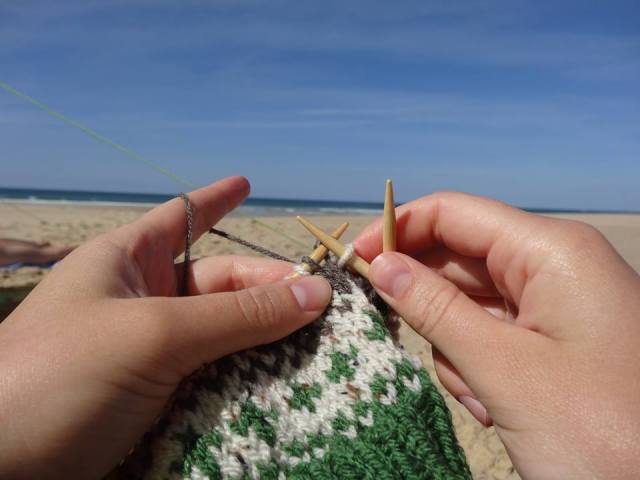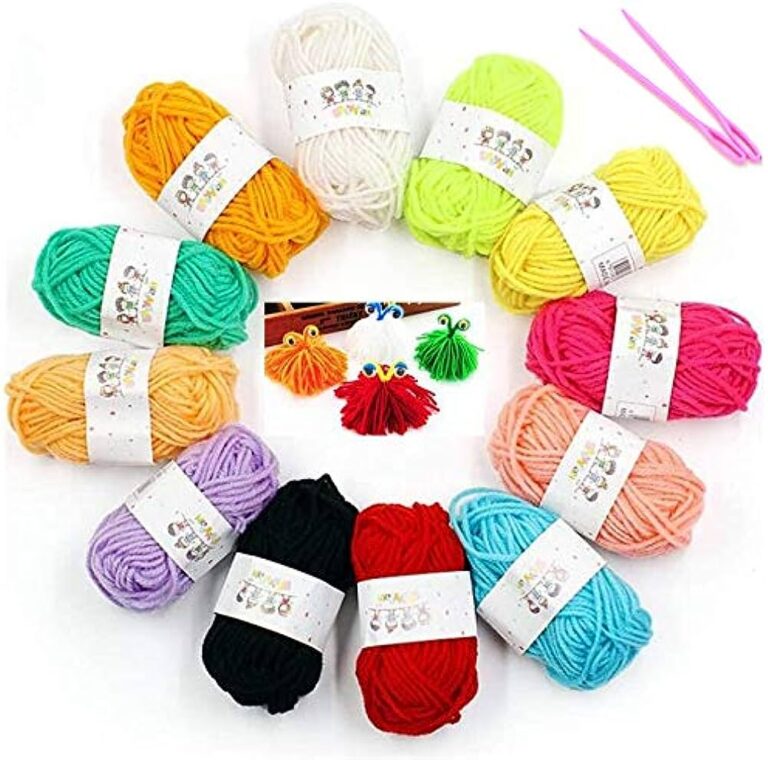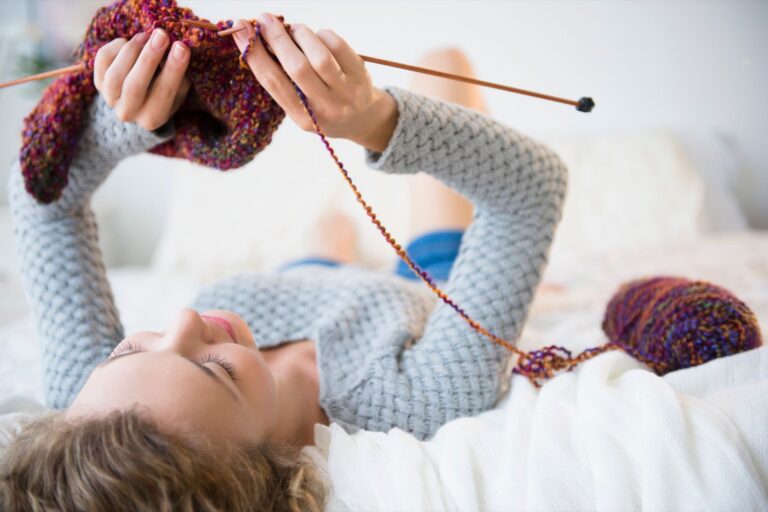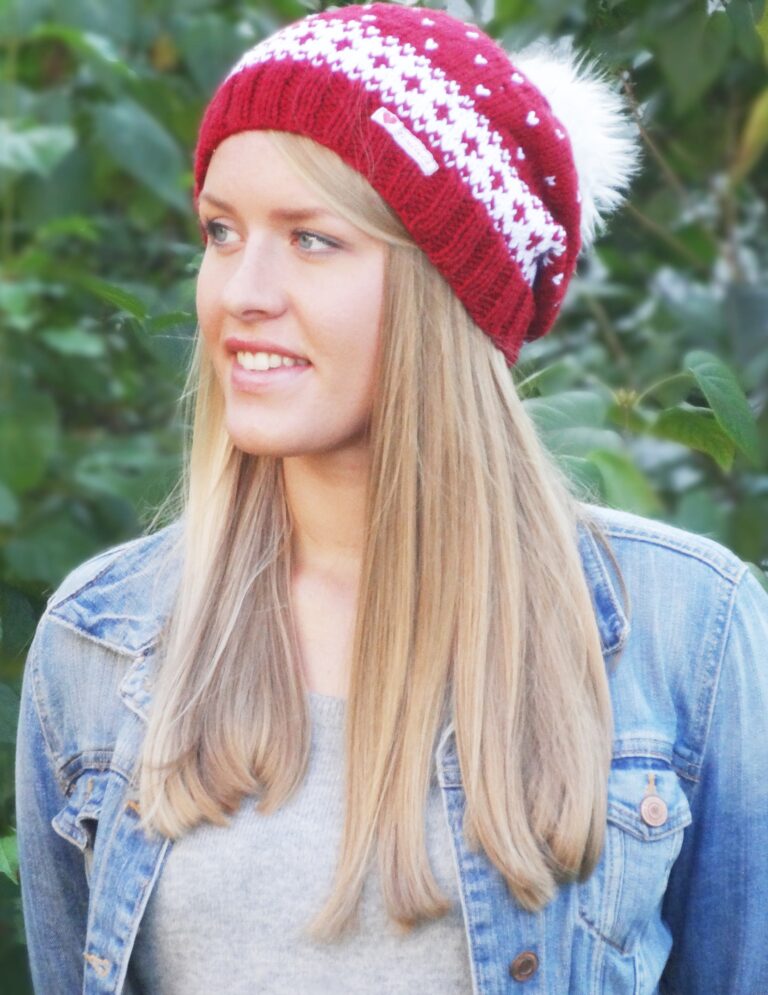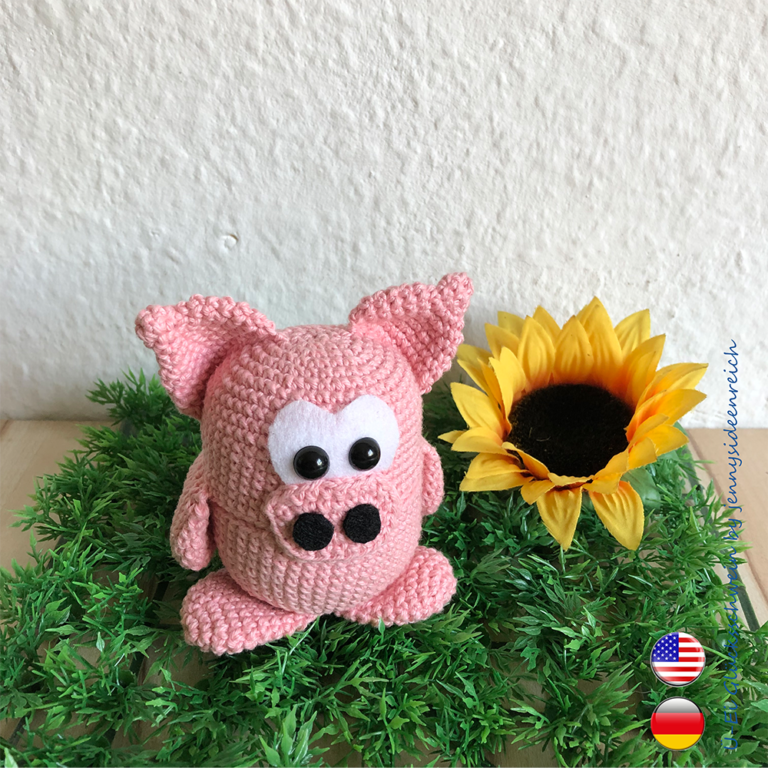Was Ist älter Stricken Oder Häkeln
Curiosity surrounds the age-old question: Which craft came first, knitting or crocheting? Knitting and crocheting, both cherished and timeless forms of needlework, have been intertwined throughout history, captivating the creative spirits of individuals across generations. While the origins of these crafts remain shrouded in mystery, their enduring popularity continues to inspire and unite crafters worldwide. So, let us embark on a delightful journey through time as we explore the fascinating question: Was Ist älter Stricken Oder Häkeln?
Historical Background
The Origin and Development of Knitting
Knitting is a craft that has a long and rich history, with its origins dating back centuries ago. Although it is unclear exactly when and where knitting first began, evidence suggests that it has been practiced in various parts of the world since ancient times.
The earliest known examples of knitting come from Egypt, where fragments of knitted socks were found in the tombs of ancient Egyptian pharaohs. These socks, which date back to the 4th century AD, showcase the skill and craftsmanship of knitters from that era.
From Egypt, knitting spread across the Middle East and eventually reached Europe. In Europe, knitting became particularly popular during the Renaissance period, with knitted items being highly valued and sought after.
The Origins and Evolution of Crocheting
Crocheting, on the other hand, has a more recent history compared to knitting. While knitting has been practiced for centuries, crocheting became popular in the 19th century. The exact origins of crocheting are still debated, but it is believed to have originated in Europe, particularly in France.
Crocheting evolved from earlier techniques such as tambour embroidery and lace making. It started as a way to create delicate and intricate lace-like fabric. Over time, crocheting gained popularity due to its versatility and ability to create intricate and decorative designs.
Tools and Materials
Knitting Needles
To engage in the craft of knitting, you will need knitting needles. These needles can come in a variety of materials including wood, metal, and plastic. They also come in different sizes, which correspond to the thickness of the yarn being used.
Knitting needles have two pointed ends, allowing you to easily manipulate the loops of the yarn. The smooth surface of the needles ensures that the yarn flows smoothly, making the knitting process more enjoyable.
Crochet Hooks
Crocheting, on the other hand, requires the use of crochet hooks. Crochet hooks are long, slender tools with a hook at one end. These hooks come in various sizes, which determine the size of the stitches being created.
Unlike knitting needles, crochet hooks are used to pull the yarn through loops to create stitches. The hook allows for greater precision and control when working with the yarn, making it easier to create intricate designs.
Yarns and Threads
Both knitting and crocheting require yarn or thread as the primary material. Yarns can be made from a variety of materials such as wool, cotton, acrylic, and silk. Each type of yarn has its own characteristics, making it suitable for different projects.
Yarns come in different weights or thicknesses, ranging from lightweight to heavyweight. The weight of the yarn determines the size of the stitches and the drape of the finished project.
Threads, on the other hand, are finer and thinner than yarns. They are commonly used in more delicate crocheting projects such as doilies and lacework.
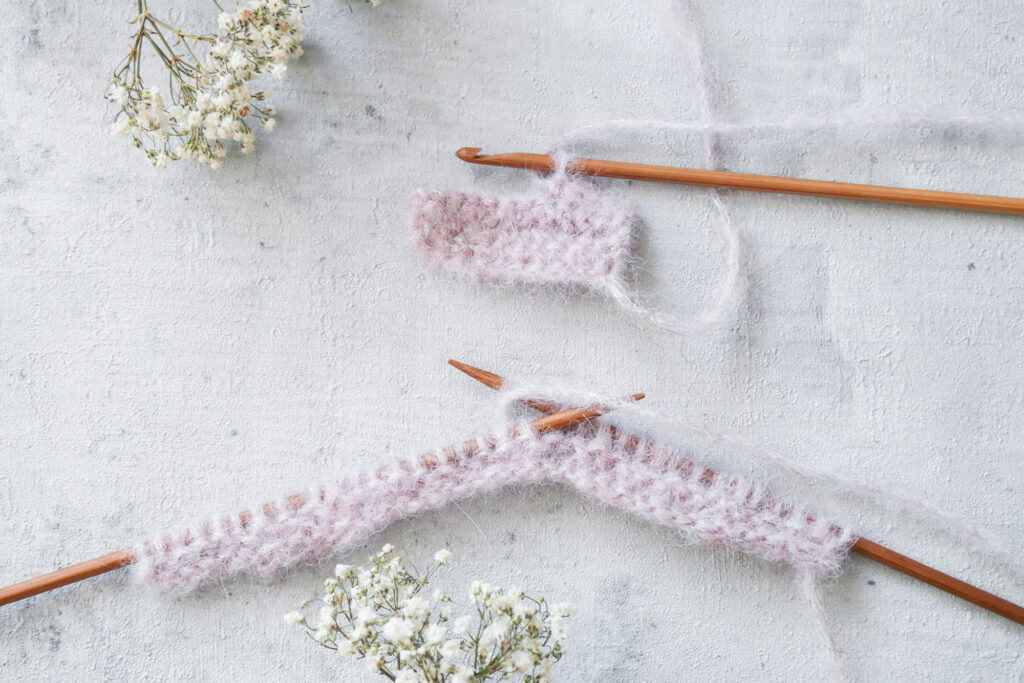
This image is property of meingehaekeltesherz.de.
Techniques and Stitches
Knitting Techniques
Knitting involves the use of two basic stitches: the knit stitch and the purl stitch. These two stitches can be combined in various ways to create different patterns and textures. Knitting techniques include knitting in the round, knitting flat, and increasing or decreasing stitches.
Knitting in the round allows for the creation of seamless items such as hats, socks, and sweaters. Knitting flat, on the other hand, is used for projects such as scarves and blankets. Increasing and decreasing stitches are techniques used to shape the knitted fabric.
Popular Knitting Stitches
Apart from the basic knit and purl stitches, there are numerous other knitting stitches that allow knitters to create unique and intricate designs. Some popular knitting stitches include the cable stitch, lace stitch, and seed stitch.
The cable stitch creates a twisted pattern that resembles interlocking cables. Lace stitches create an open and airy fabric with decorative patterns. The seed stitch alternates knits and purls to create a textured pattern that resembles seeds.
Crocheting Techniques
Crocheting involves the use of several basic stitches, including the single crochet, double crochet, and treble crochet. These stitches can be combined in various ways to create different patterns and textures. Crocheting techniques include working in rows or rounds, and increasing or decreasing stitches.
Working in rows is similar to knitting flat and is often used to create rectangular or square-shaped projects such as blankets and scarves. Working in rounds, on the other hand, is used to create circular or cylindrical items such as hats and amigurumi toys. Increasing and decreasing stitches are used to shape the crocheted fabric.
Popular Crocheting Stitches
In crocheting, there is a wide variety of stitches to explore and experiment with. Some popular crocheting stitches include the granny square, shell stitch, and popcorn stitch.
The granny square is a classic crocheting stitch that is often used to create blankets and afghans. The shell stitch creates a decorative pattern resembling a row of shells. The popcorn stitch creates raised clusters of stitches, adding texture and dimension to the crocheted fabric.
Versatility and Projects
Knitting Versatility
Knitting is a versatile craft that allows you to create a wide range of projects, from functional items to intricate pieces of art. Whether you’re a beginner or an experienced knitter, there is a project for everyone.
Knitted garments such as sweaters, hats, and scarves are popular choices, as they provide warmth and comfort. However, knitting is not limited to clothing. It can also be used to create home decor items such as blankets, pillows, and even wall hangings.
Common Knitting Projects
Some common knitting projects that you can try as a beginner include a simple scarf, a cozy hat, or a pair of warm mittens. As you gain more experience, you can challenge yourself with more complex projects such as a cable-knit sweater or a lace shawl.
Knitting also offers the opportunity for creative expression. You can experiment with different yarns, colors, and stitch patterns to create one-of-a-kind pieces that reflect your personal style.
Crochet Versatility
Crocheting is equally versatile, allowing you to create a wide range of projects. From delicate doilies to sturdy blankets, the possibilities are endless.
Crocheted clothing items such as tops, shawls, and cardigans are popular choices, as they offer comfort and style. Crocheting also lends itself well to creating accessories like hats, bags, and gloves.
Common Crochet Projects
As a beginner crocheter, you can start with simple projects such as a dishcloth, a granny square blanket, or a cute amigurumi toy. With practice, you can take on more challenging projects such as a lacy tablecloth or a detailed crochet garment.
Crocheting allows for intricate designs and patterns, making it a great choice for creating decorative items like coasters, pillow covers, and wall hangings. The versatility of crochet empowers you to explore your creativity and bring your vision to life.
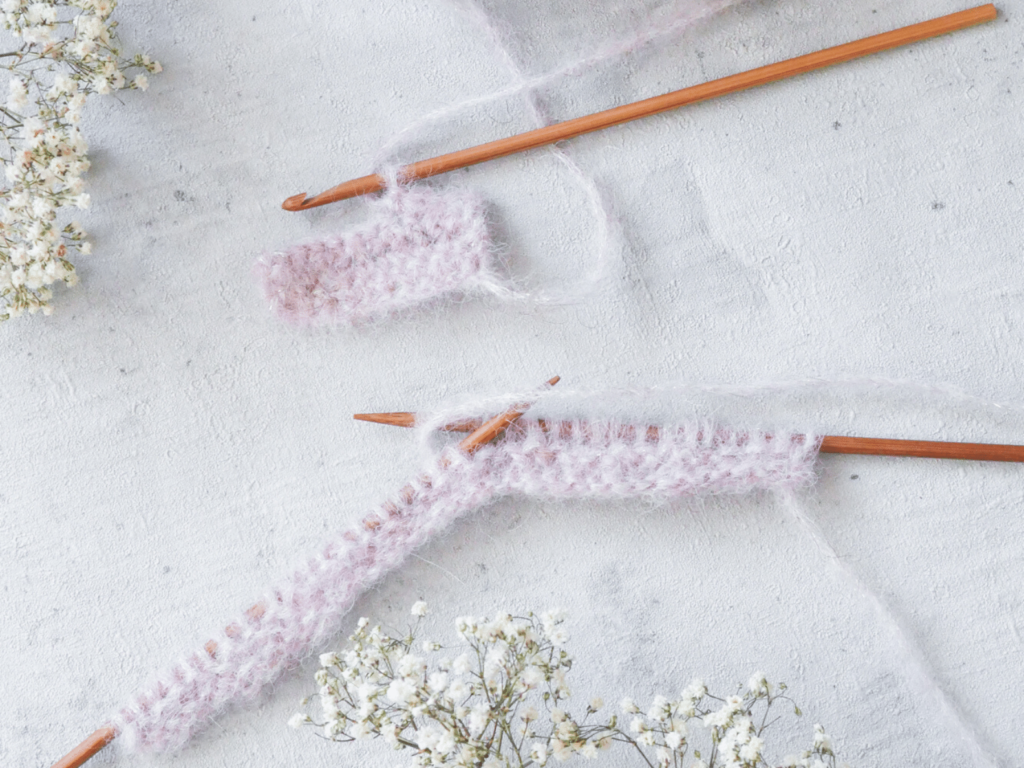
This image is property of meingehaekeltesherz.de.
Difficulty and Learning Curve
Ease of Learning Knitting
Learning to knit can be an enjoyable and rewarding experience. The basic knit and purl stitches are relatively easy to learn, and with practice, you can quickly get the hang of them. The repetitive nature of knitting can also be calming and meditative.
There are countless online resources, tutorials, and books available to help beginners learn knitting. Additionally, many local yarn shops offer knitting classes or workshops where you can learn from experienced knitters.
Challenges in Learning Knitting
Despite its relative ease for beginners, knitting can present some challenges. Tension control, which refers to the evenness of the stitches, can be a common hurdle for beginners. Achieving consistent tension may require practice and patience.
Learning to read knitting patterns and charts can also be challenging for newcomers. Knitting patterns contain abbreviations and symbols that may initially seem confusing. However, with time and practice, deciphering knitting patterns becomes easier.
Ease of Learning Crocheting
Crocheting, like knitting, is a craft that can be learned with relative ease. The basic stitches of single crochet, double crochet, and treble crochet are simple to master, especially with the abundance of online tutorials and instructional videos available.
Crocheting can be more forgiving than knitting when it comes to tension control. The larger and more flexible crochet hooks allow for looser or tighter stitches, making it easier for beginners to achieve an even tension.
Challenges in Learning Crocheting
Although crocheting is generally considered easier to learn than knitting, it still presents its own set of challenges. Keeping track of stitches can be tricky, especially when working on complex patterns with multiple stitch variations.
Additionally, learning to read crochet patterns and understand the symbols and abbreviations used can take some time and practice. Familiarizing yourself with these conventions will greatly enhance your crocheting journey.
Popularity and Trends
Historical Popularity of Knitting
Knitting has a long history of popularity, from ancient civilizations to modern times. In earlier centuries, knitting was a necessary skill for producing clothing and textiles. Knitted items were highly valued and often passed down through generations.
During the Industrial Revolution, knitting became less of a necessity as mass-produced clothing became more readily available. However, knitting experienced a revival in the mid-20th century as people rediscovered the joy of creating handmade items.
Modern Trends in Knitting
In recent years, knitting has experienced a surge in popularity. More and more people are turning to knitting as a way to relax, express their creativity, and find a sense of accomplishment. Hand-knitted items have gained appeal in a world increasingly dominated by mass-produced goods.
Modern knitting trends include using sustainable and eco-friendly yarns, experimenting with unconventional materials, and incorporating vibrant colors and geometric patterns into designs. Knitting communities and social media platforms have also played a significant role in fostering a sense of connection and sharing among knitters.
Historical Popularity of Crocheting
Crocheting gained popularity in the 19th century as a way to create delicate and intricate lace-like fabric. It was seen as a fashionable art form, with crocheted lace being used to adorn clothing and household items.
Crocheting also had practical uses, with the craft being used to produce warm and durable items such as blankets and socks. Like knitting, crocheted items were often cherished heirlooms that were treasured for generations.
Modern Trends in Crocheting
Similar to knitting, crocheting has experienced a resurgence in popularity in recent years. The accessibility of online tutorials and social media platforms has helped fuel the growth in crocheting enthusiasts.
Modern crocheting trends include exploring new stitch patterns and designs, experimenting with different yarn weights and fibers, and incorporating crochet into contemporary fashion and home decor. There is also a growing interest in using crocheting as a form of artistic expression, pushing the boundaries of what can be created with a hook and some yarn.
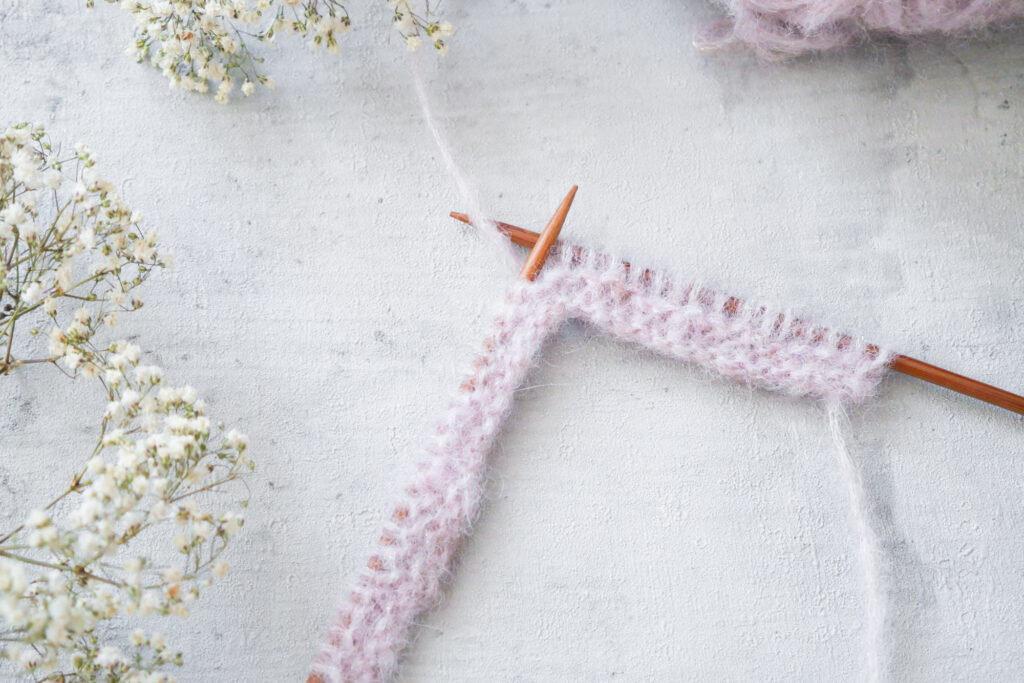
This image is property of meingehaekeltesherz.de.
Cultural Significance
Knitting in Different Cultures
Knitting has played a significant role in the cultures of various countries around the world. In many Scandinavian countries, knitting has a rich tradition and is deeply rooted in the national identity. Traditional Norwegian patterns, for example, are known for their intricate designs and geometric motifs.
Similarly, knitting holds cultural significance in countries like Ireland, Scotland, and the Shetland Islands. Aran knitting, a style of knitting originating from the Aran Islands in Ireland, is famous for its intricate cables and patterns that represent different aspects of island life.
Crocheting in Different Cultures
Crocheting also has cultural significance in many countries. In Central and South America, there is a long history of crocheting, particularly in countries like Mexico and Peru. Delicate crocheted items such as shawls and doilies have been passed down through generations and are cherished as heirlooms.
In countries like Japan, crocheting has become a popular craft, with many artisans using traditional techniques to create intricate and delicate crochet designs. The art of crocheting is often seen as a way to preserve cultural heritage and connect with the past.
Health Benefits
Knitting for Relaxation and Stress Reduction
Knitting provides a calming and therapeutic experience for many individuals. The repetitive motions and focus required can help reduce stress and anxiety, promoting a sense of relaxation and well-being.
Engaging in knitting stimulates the release of dopamine, a neurotransmitter associated with pleasure and reward. This can contribute to a sense of accomplishment and overall mood improvement. The meditative nature of knitting can also help alleviate symptoms of depression.
Crocheting for Mindfulness and Mental Well-being
Crocheting, like knitting, offers similar mental health benefits. The rhythmic and repetitive movements of crocheting can induce a state of mindfulness, allowing individuals to focus on the present moment and promote a sense of calmness.
Crocheting has been found to reduce anxiety and improve cognitive function. It can also serve as a distraction from negative thoughts and worries, providing a positive outlet for creativity and self-expression.
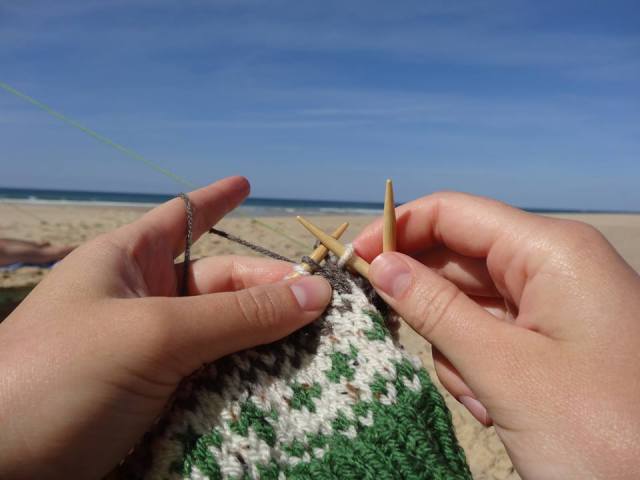
This image is property of lisibloggt.files.wordpress.com.
Social Aspects
Knitting Communities and Groups
Knitting has a strong sense of community, with knitters coming together to share their experiences, knowledge, and enthusiasm for the craft. Knitting groups and clubs provide opportunities for social interactions, forming friendships, and bonding over a shared passion.
These communities offer support and encouragement, particularly for beginners. Experienced knitters often willingly share their expertise and provide guidance to those who are just starting their knitting journey.
Crocheting Communities and Groups
Crocheting also has a vibrant and welcoming community. Crochet groups and online forums provide a space for crocheters to connect, ask questions, and share their creations.
Crocheting communities often organize meet-ups, workshops, and even charity projects, where crocheters come together to create items for those in need. The social aspect of crocheting allows for the exchange of ideas, techniques, and patterns, creating a supportive network of like-minded individuals.
Environmental Impact
Sustainability in Knitting
Knitting can be a sustainable craft if done with conscious choices. Many knitters are now embracing eco-friendly yarns made from organic, recycled, or sustainable fibers. These yarns often have a lower carbon footprint and minimize the impact on the environment.
Knitting also promotes slow fashion and reduces waste. Hand-knitted items are often cherished and kept for a long time, reducing the need for frequent replacements. Repurposing yarn from old or thrifted garments is another sustainable practice embraced by knitters.
Sustainability in Crocheting
Similar to knitting, crocheting can also be a sustainable craft. The use of eco-friendly yarns and fibers is gaining popularity among crocheters, reducing the overall environmental impact.
Crocheting allows for the creation of long-lasting items that can be passed down through generations. Upcycling and repurposing materials are also common practices among crocheters, minimizing waste and reducing the demand for new resources.
Crocheting and knitting offer a sustainable and creative outlet in a world that is increasingly focused on fast fashion and disposable products. By embracing these crafts, individuals can make a positive impact on the environment while expressing their creativity and enjoying the many benefits these crafts offer.
In conclusion, whether you choose to knit or crochet, you are embarking on a journey that connects you with a rich history, allows for creative expression, and offers numerous health and social benefits. The beauty of these crafts lies in their versatility, allowing you to create functional items, decorative pieces, or pieces of wearable art. So grab your knitting needles or crochet hook, pick your favorite yarn, and let your imagination and creativity run wild!
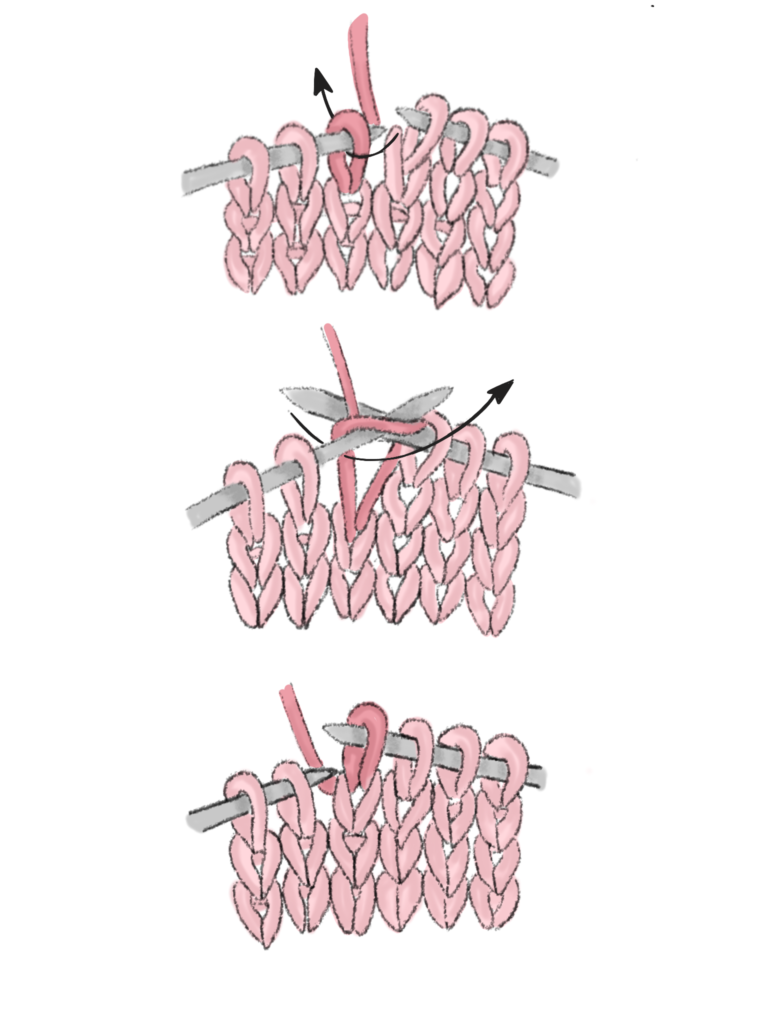
This image is property of meingehaekeltesherz.de.
